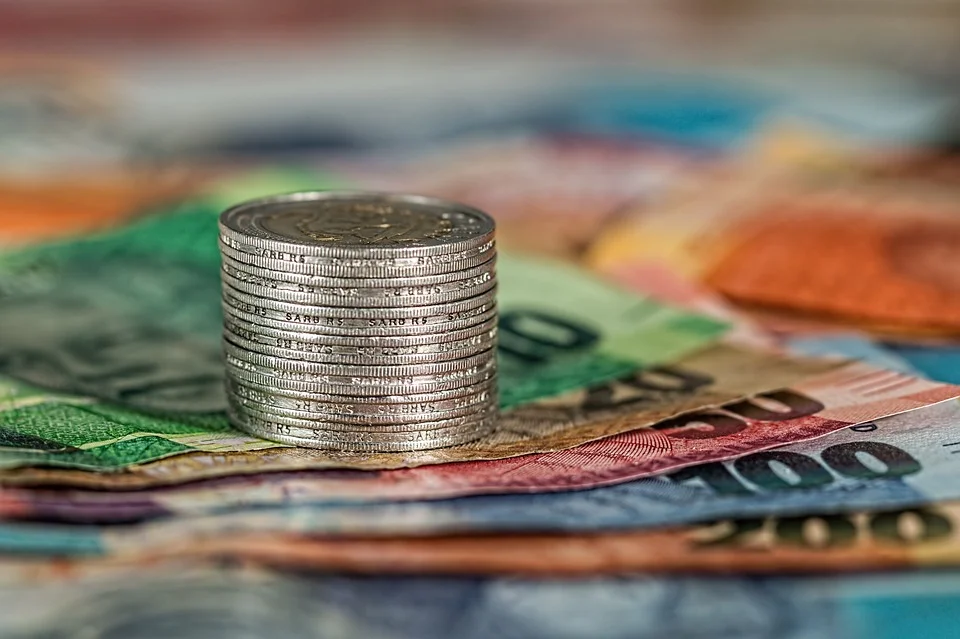At some point, most South Africans will need to borrow money—whether to buy a home, fund education, or cover an unexpected emergency. But not all loans are created equal, and choosing the wrong one can lead to financial strain or even a debt spiral. With over 26 million active credit consumers in South Africa as of Q3 2024 (National Credit Regulator, 2024), the stakes are high for making informed decisions.
This blog aims to demystify the types of loans available in South Africa, explain how they work, and guide you toward the option best suited to your needs. By addressing common questions and pitfalls, we’ll equip you with the knowledge to borrow wisely and avoid costly mistakes.
The South African Credit Landscape
South Africa’s credit market is vibrant but complex. According to the National Credit Regulator (NCR), the total outstanding consumer credit balance reached R2.3 trillion in 2024, with personal loans, home loans, and vehicle finance dominating. Lenders range from traditional banks (e.g., Standard Bank, Absa) to credit unions, microfinance institutions, and fintech platforms like Wonga and Yoco Capital.
The National Credit Act (NCA) of 2005 plays a pivotal role in protecting borrowers. It mandates transparency in loan agreements, caps interest rates on certain loans, and enforces affordability assessments to prevent reckless lending. Despite these protections, many borrowers still fall into debt traps due to misinformation or desperation.
Why Do South Africans Borrow?
Loans are a financial lifeline for millions of South Africans, addressing both planned and unexpected needs. The 2024 NCR Consumer Credit Report reveals that 60% of credit-active South Africans have at least one loan, driven by diverse motivations. Below are the primary reasons people borrow, supported by data and context:
- Education: With tertiary education costs rising—private university fees can exceed R100,000 annually (Stellenbosch University, 2024)—many turn to loans. The National Student Financial Aid Scheme (NSFAS) disbursed R48 billion to 1.2 million students in 2024, but gaps in funding for middle-income families or non-degree programs push others toward private lenders like Eduloan or banks.
- Homeownership: Property ownership remains a key wealth-building strategy, but high property prices (average home price in Gauteng: R1.4 million, Property24, 2025) make mortgages essential. In 2024, home loans accounted for 53% of total credit exposure (NCR), reflecting their popularity despite rising interest rates.
- Mobility: Vehicles are critical for work and personal use, especially in areas with limited public transport. Vehicle finance agreements grew by 8% in 2024 (TransUnion), with many borrowing to buy new or used cars. Commercial vehicle loans also support small businesses, such as delivery services or tradespeople.
- Business Growth: Small and medium enterprises (SMEs) employ 60% of South Africa’s workforce (SEDA, 2024), and loans fuel their expansion. The Small Enterprise Finance Agency (SEFA) approved R1.9 billion in loans for SMEs in 2024, while banks and fintechs cater to larger enterprises. Common uses include equipment purchases, inventory, or cash flow management.
- Personal Needs: Unplanned expenses like medical emergencies (e.g., private hospital bills averaging R50,000, Discovery Health, 2024), weddings, or home repairs often require personal loans. These loans are also used for lifestyle purchases like travel or furniture, though this can lead to overborrowing.
- Debt Consolidation: With 40% of credit-active consumers having multiple loans (NCR, 2024), debt consolidation loans are increasingly popular. These combine high-interest debts (e.g., credit cards at 20%+ APR) into a single loan with a lower rate, reducing monthly payments and simplifying finances.
Understanding your borrowing purpose is critical, as it determines the loan type, amount, and repayment strategy that best suits your financial situation.
The Main Types of Loans in South Africa
South Africa’s loan market offers diverse options, each with unique features, costs, and risks. Below is a detailed breakdown of the main loan types, enriched with data and practical insights.
A. Personal Loans
What They Are: Personal loans are unsecured, meaning no collateral is required. Borrowers receive a fixed amount (typically R1,000–R250,000) and repay it over 1–5 years with fixed or variable interest.
Interest Rates: Range from 10% to 27.5% APR, depending on credit score, income, and lender. The NCR notes that the average personal loan interest rate was 19.8% in 2024. For example, a R50,000 loan at 20% APR over 3 years costs R66,000 total, including fees.
Use Cases: Weddings (average cost: R70,000–R150,000, The Wedding Expo, 2024), medical emergencies, home renovations, or consolidating high-interest credit card debt.
Market Trends: Personal loan approvals surged by 12% in 2024 (TransUnion), driven by rising living costs. Fintech lenders like Capitec and TymeBank offer instant approvals, but traditional banks provide larger amounts for high-credit borrowers.
Pros:
- Fast approval (some within 24 hours).
- No collateral, reducing asset risk.
- Flexible use for any purpose.
Cons:
- Higher interest rates than secured loans.
- Short terms increase monthly payments (e.g., R2,000/month for R50,000 over 3 years).
- Risk of overborrowing due to accessibility.
B. Home Loans (Mortgages)
What They Are: Secured loans for purchasing or renovating property, repaid over 10–30 years. The property is collateral, meaning default risks repossession.
Interest Rates: Tied to the prime lending rate (11.75% in 2025, South African Reserve Bank). Rates can be fixed (predictable) or variable (fluctuates with prime). In 2024, the average home loan size was R1.2 million (Ooba, 2024).
Requirements: A credit score above 600, a 10%–20% deposit, and proof of income. For a R1,000,000 loan at 11.75% over 20 years, monthly repayments are ~R9,800, totaling R2.35 million with interest.
Market Trends: Home loan approvals dropped 5% in 2024 due to high interest rates, but demand remains strong in urban areas like Johannesburg and Cape Town (Lightstone Property).
Pros:
- Lower rates than unsecured loans.
- Builds equity and wealth through property.
- Interest may be tax-deductible for investment properties.
Cons:
- Long-term commitment (decades).
- High upfront costs (deposit, transfer fees averaging R50,000).
- Repossession risk if payments are missed.
C. Vehicle Finance
What They Are: Loans to buy new or used vehicles, repaid over 3–6 years. Options include installment sales (ownership) or lease agreements (rental). The vehicle is collateral.
Interest Rates: Range from 13% to 18% APR. A R300,000 car at 15% over 60 months costs ~R6,500 monthly, totaling R390,000 with interest (WesBank, 2024).
Key Features: Most require a 10%–20% down payment. “Balloon payments” (a lump sum at the end, e.g., 30% of the loan) lower monthly costs but increase total debt. In 2024, 65% of vehicle finance deals included balloons (TransUnion).
Challenges: Cars depreciate rapidly (20% in the first year, AutoTrader), so you may owe more than the car’s worth if sold early.
Pros:
- Enables mobility for work or personal use.
- Secured, so rates are lower than personal loans.
- Flexible terms (e.g., no balloon for lower total cost).
Cons:
- Depreciation erodes resale value.
- Balloon payments can trap borrowers.
- Repossession risk if payments lapse.
D. Student Loans
What They Are: Loans for tertiary education, offered by NSFAS, Eduloan, or banks. Repayments are often deferred until employment, with income-contingent terms for subsidized loans.
Interest Rates: NSFAS charges 7%–9% (subsidized), while private loans range from 10%–12%. In 2024, NSFAS funded 1.2 million students, but private loans grew 15% due to funding gaps (Eduloan).
Challenges: Graduate unemployment (29.8% in 2024, Stats SA) delays repayment, with 20% of student loan borrowers defaulting within 3 years (TransUnion). Average student debt is R80,000 upon graduation.
Pros:
- Enables access “‘to career-enhancing education.
- Subsidized loans have low rates and flexible terms.
- Deferred repayment eases immediate burden.
Cons:
- Long-term debt for graduates.
- Limited funding for vocational or short courses.
- Strict eligibility for NSFAS (household income <R350,000/year).
E. Business Loans
What They Are: Loans to start or grow businesses, including term loans, revolving credit, or equipment finance. Providers include banks, SEFA, and fintechs like Lulalend.
Interest Rates: Range from 10% to 20%, based on business credit and collateral. A R100,000 loan at 15% over 5 years costs ~R2,400 monthly (SEFA, 2024).
Requirements: A detailed business plan, financial statements, and often collateral or a personal guarantee. In 2024, SEFA approved R1.9 billion for 12,000 SMEs, but banks rejected 60% of small business loan applications (SME South Africa).
Market Trends: Fintechs are filling gaps left by banks, offering loans up to R500,000 with approvals in 48 hours, though at higher rates (18%–25%).
Pros:
- Fuels job creation and economic growth.
- Interest may be tax-deductible.
- Flexible options for cash flow or equipment.
Cons:
- High risk if the business fails.
- Lengthy approval for bank loans.
- Collateral requirements exclude startups.
F. Payday & Micro Loans
What They Are: Short-term (1–3 months), high-interest loans (R500–R8,000) for low-income borrowers or emergencies. No collateral is required.
Interest Rates: Often exceed 60% APR, with fees. The NCR caps short-term loan interest at 5% per month, but total costs can double the principal (e.g., R1,000 loan costs R1,800 after 3 months).
Market Trends: Payday loans grew 10% in 2024, with 2 million borrowers (NCR). Unethical lenders exploit gaps, despite NCA regulations.
Risks: 30% of payday loan borrowers take multiple loans annually, creating debt cycles (DebtBusters, 2024).
Pros:
- Instant access to small amounts.
- Minimal eligibility (ID, bank account, income proof).
Cons:
- Exorbitant costs.
- Debt-trap risk.
- Predatory practices by unregistered lenders.
Comparison Table: Key Features of Each Loan Type
| Loan Type | Interest Rate Range | Term Length | Collateral | Use Case | Risk Level |
|---|---|---|---|---|---|
| Personal Loan | 10%–27.5% | 1–5 years | No | General personal use | Moderate |
| Home Loan | ~11.75% | 10–30 years | Yes | Property purchase | Low |
| Vehicle Finance | 13%–18% | 3–6 years | Yes | Buying a car | Moderate |
| Student Loan | 7%–12% (subsidized) | Up to 10 years | Sometimes | Education funding | Low |
| Business Loan | 10%–20% | 1–10 years | Sometimes | Business growth | High |
| Payday Loan | 60%+ APR | <3 months | No | Emergency shortfall | Very High |
Factors to Consider Before Choosing a Loan
- Credit Score & History: A score above 600 secures better rates. Free checks are available via TransUnion or Experian.
- Affordability: Keep your debt-to-income ratio below 40%. For example, if you earn R20,000 monthly, loan repayments shouldn’t exceed R8,000.
- Interest Rate Type: Fixed rates ensure predictable payments; variable rates may rise with the prime rate (e.g., from 11.75% to 13% in a rate hike).
- Total Cost of Credit: Include fees (initiation, service, insurance). A R10,000 loan at 20% APR with R1,000 fees costs R13,000 total.
- Repayment Flexibility: Avoid loans with high early repayment penalties or no payment holiday options.
Common Pitfalls to Avoid
- Taking the First Offer: Comparing three lenders can save R5,000–R10,000 on a R50,000 loan.
- Borrowing Without a Plan: Loans for vague purposes lead to overspending. Always define your need.
- Ignoring Fine Print: Balloon payments or hidden fees can inflate costs by 20%–30%.
- Over-Reliance on Payday Loans: Repeated borrowing at 60% APR can double debt annually.
How to Make the Right Choice: A Step-by-Step Guide
Choosing the right loan requires research, planning, and vigilance. Here’s an expanded guide to ensure you make an informed decision, backed by practical tools and data:
- Define Your Need and Loan Type: Match your purpose to the appropriate loan. For example, a R1,000,000 home purchase requires a mortgage, while a R20,000 medical bill suits a personal loan. List your goal, amount needed, and repayment timeline. Avoid borrowing more than necessary—40% of borrowers regret taking larger loans than needed (DebtBusters, 2024).
- Assess Affordability: Calculate what you can repay without compromising essentials (rent, food, savings). Use online calculators from Nedbank, Absa, or Capitec to estimate monthly payments. For instance, a R50,000 personal loan at 20% APR over 3 years requires R2,000 monthly. Ensure your debt-to-income ratio stays below 40%. If you earn R25,000, limit total debt payments to R10,000.
- Compare Lenders Thoroughly: Use platforms like LoanCompare SA or BetterBond to aggregate offers from banks, fintechs, and microlenders. In 2024, comparison tools saved borrowers an average of R8,000 on personal loans (LoanCompare SA). Check interest rates, fees, and terms. For example, Capitec may offer 18% APR on a R50,000 loan, while a fintech charges 25%. Request quotes from at least three lenders.
- Verify Lender Credibility: Confirm the lender is registered with the NCR (call 0860 627 627 or check www.ncr.org.za). Unregistered lenders issued 15% of payday loans in 2024, often with illegal terms (NCR). Read reviews on Hellopeter or Google (e.g., Absa’s 4.2/5 rating vs. unregistered lenders’ 2/5). Avoid lenders with complaints about hidden fees or aggressive debt collection.
- Scrutinize Terms and Ask Questions: Before signing, clarify key details: How is interest calculated (daily or monthly)? Are there penalties for early repayment (e.g., 1% of outstanding balance)? What happens if you miss a payment (e.g., 5% late fee)? For example, a R300,000 vehicle loan with a 30% balloon payment increases the total cost by R90,000 if not planned for. Request a pre-agreement statement, mandated by the NCA, to review all costs.
- Explore Alternatives: If a loan feels unaffordable, consider options like saving, crowdfunding, or family loans. For SMEs, grants from SEFA or the Department of Trade and Industry funded 5,000 businesses in 2024 (DTI). For emergencies, negotiate payment plans with hospitals or service providers—60% of medical providers offer installment options (Discovery Health, 2024).
- Monitor Your Credit Post-Loan: After taking a loan, check your credit report quarterly to ensure payments are recorded correctly. Errors can lower your score, affecting future borrowing. Free reports are available annually from TransUnion or Experian. If struggling, contact a debt counselor registered with the NCR—debt review helped 50,000 consumers avoid default in 2024 (DebtBusters).
Choosing the right loan is about aligning your financial needs with the best product, repayment capacity, and lender. Whether funding a home, education, or business, prioritize affordability, compare options, and read the fine print. As the NCR advises, “Credit is a tool, not a lifestyle.” Borrow with purpose to build your future, not burden it.


